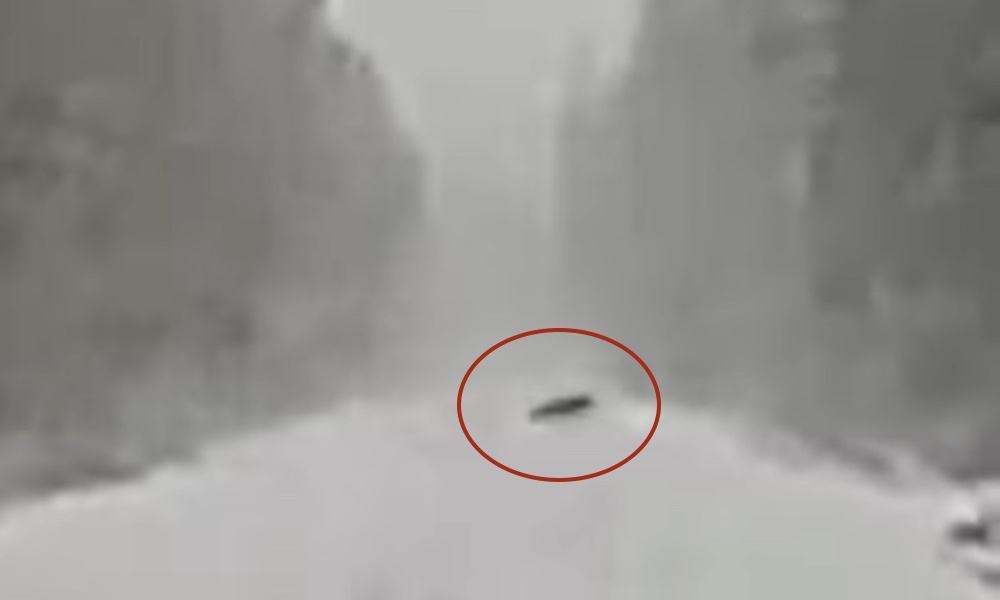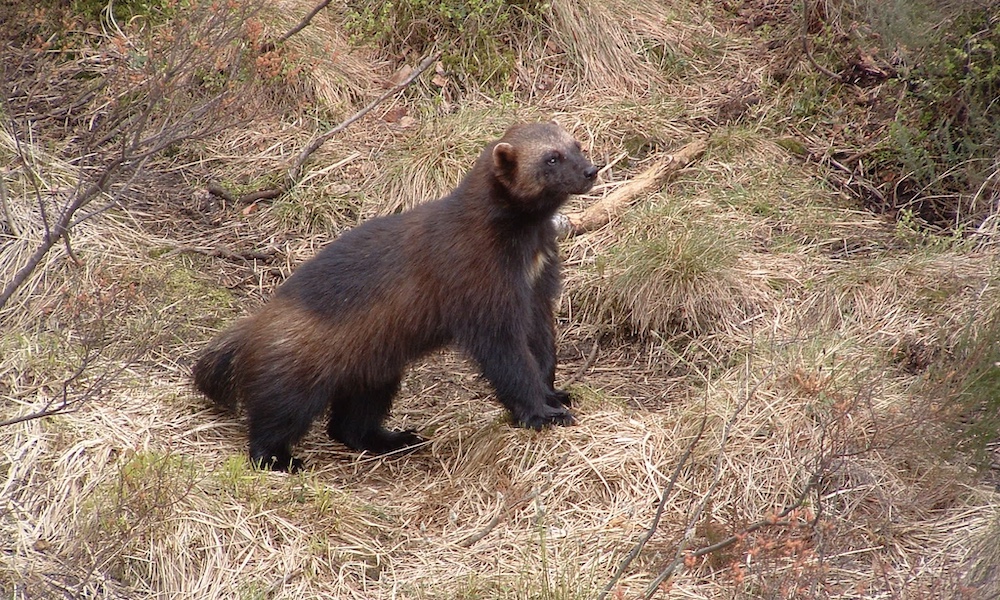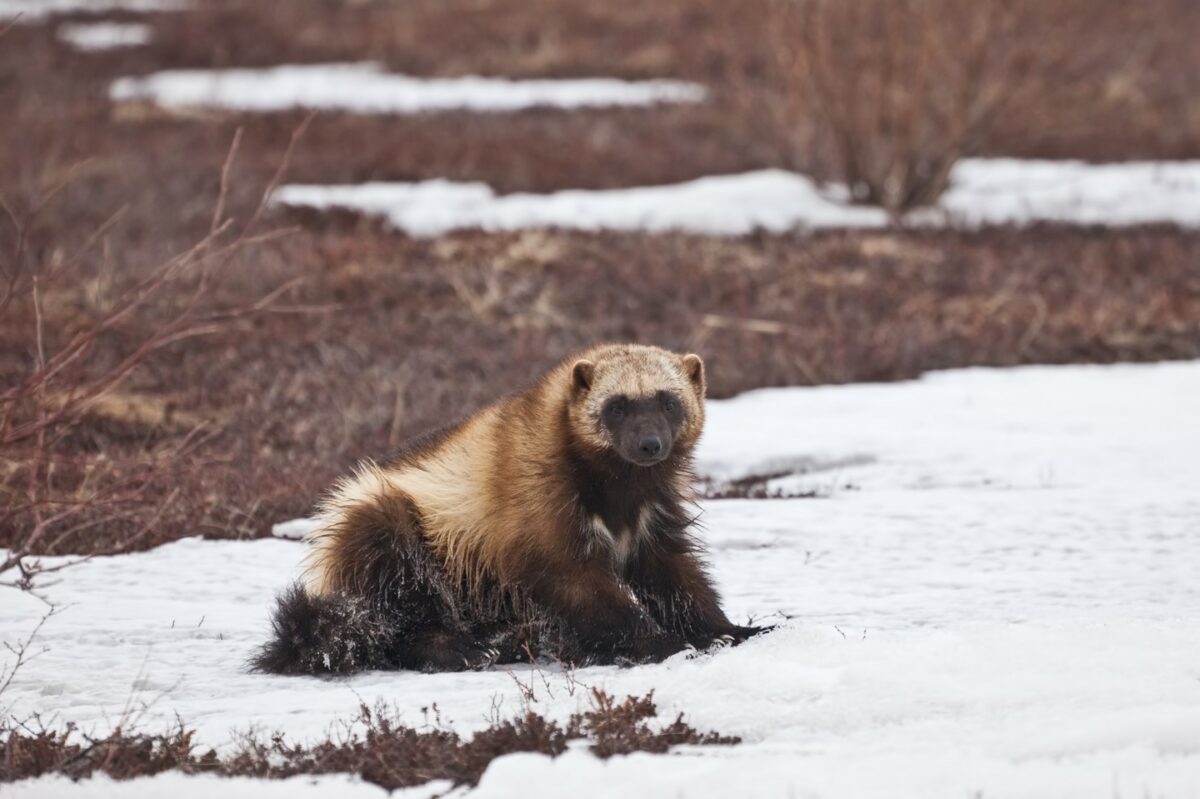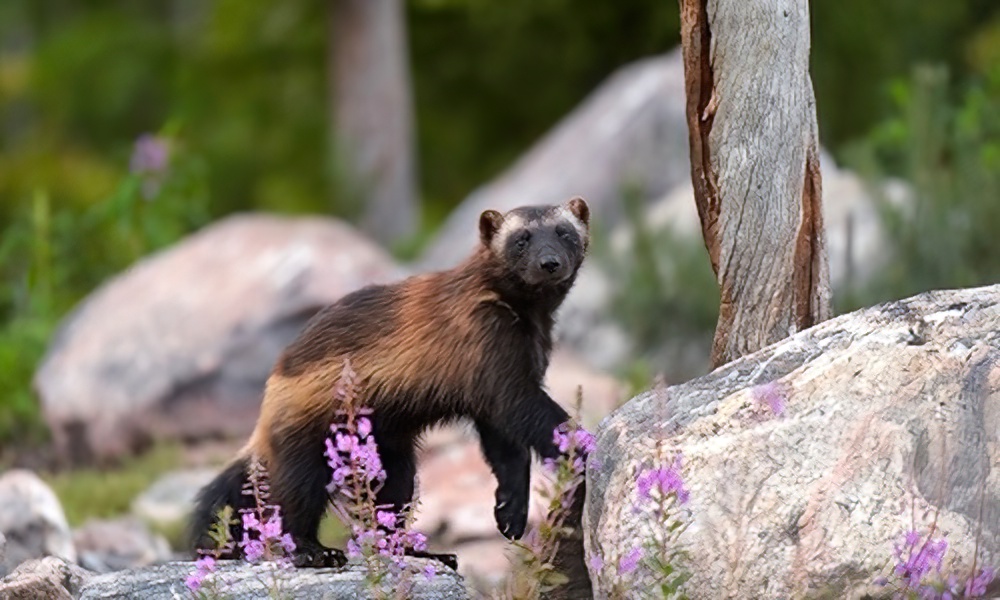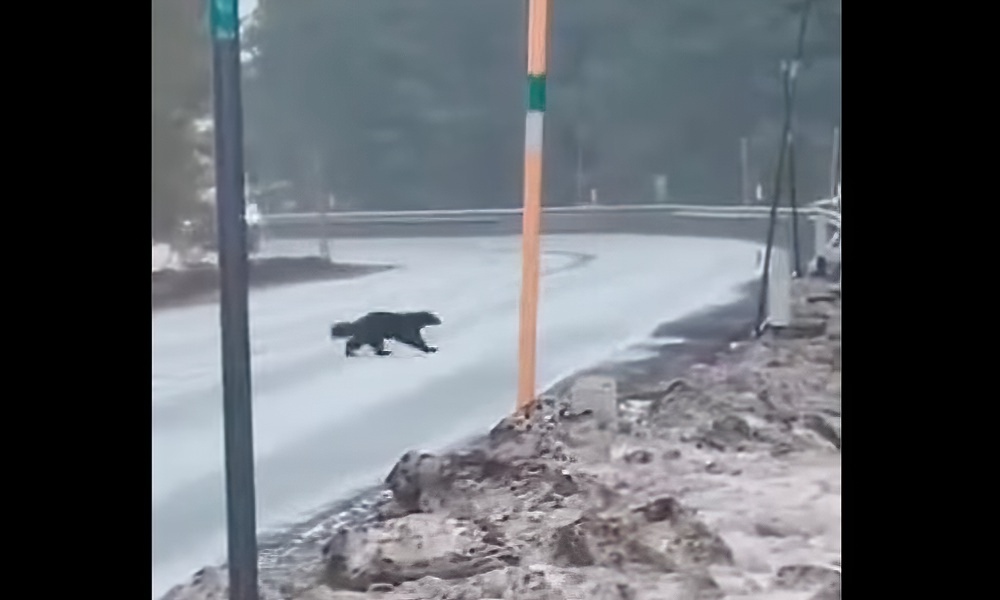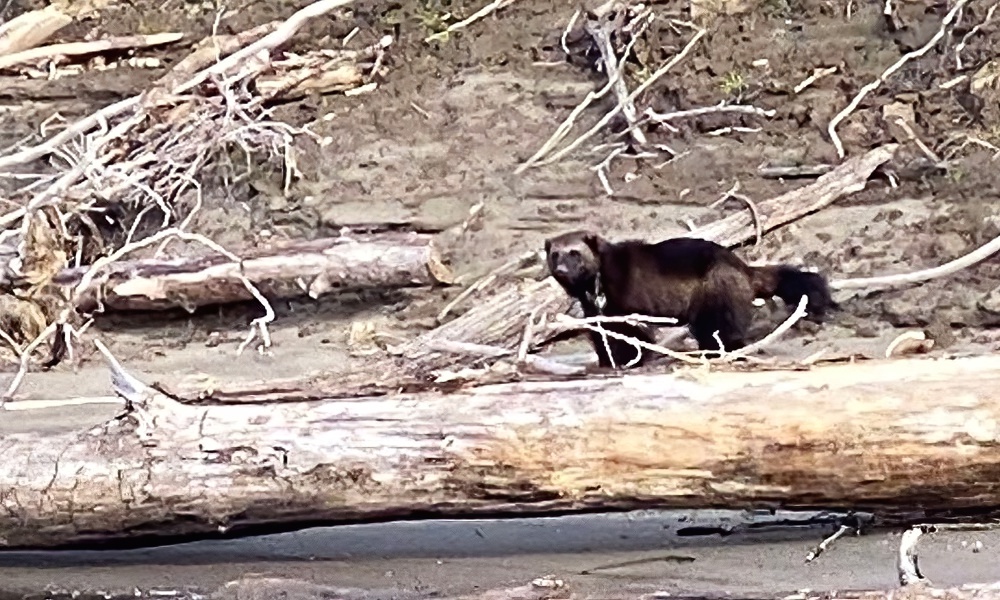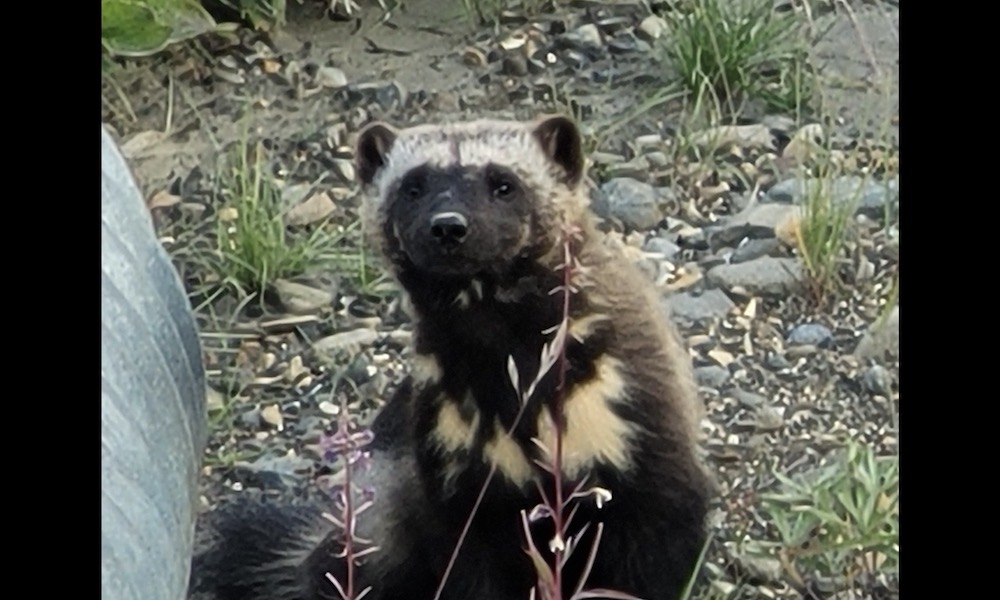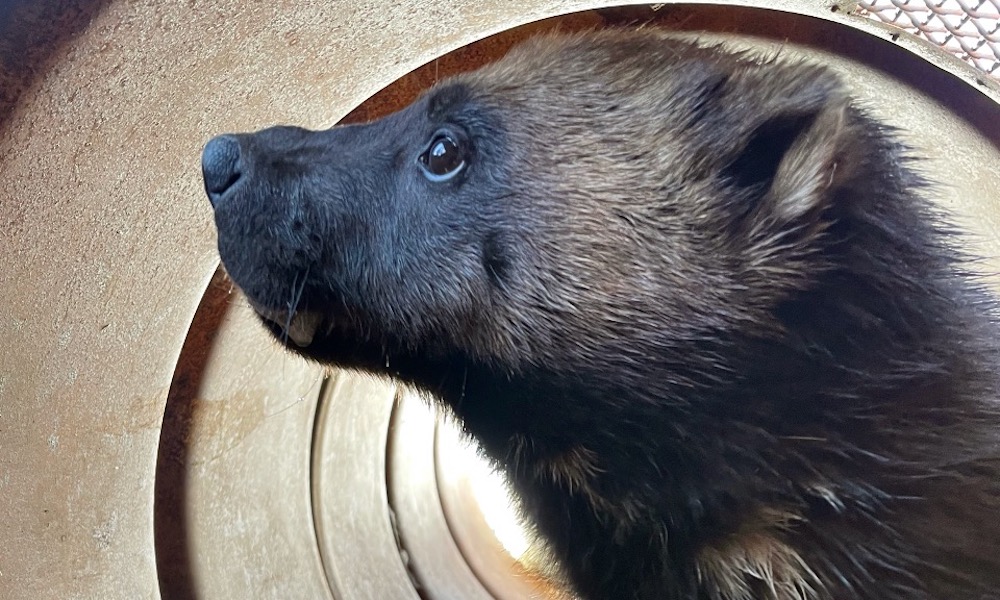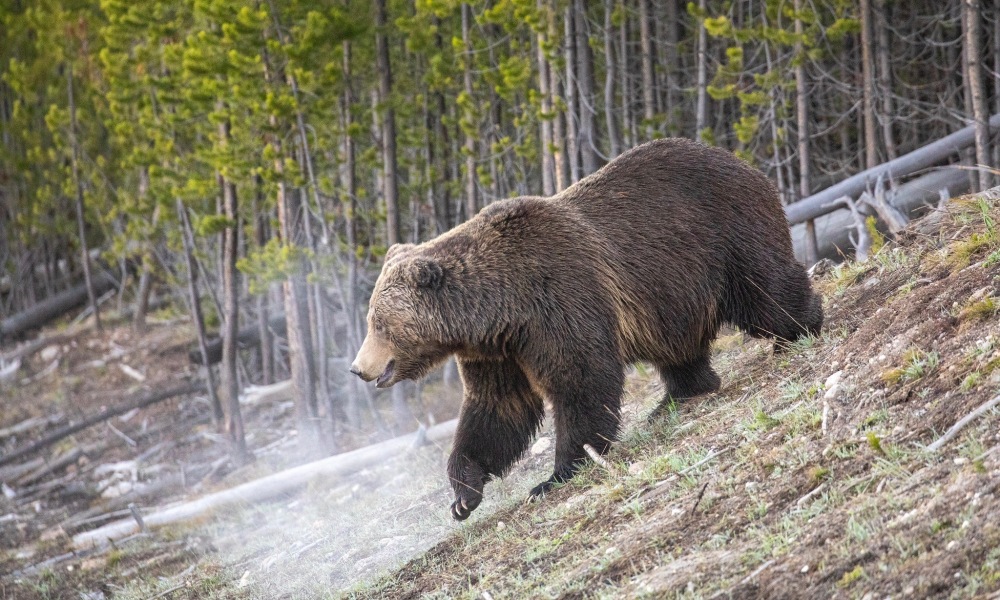A Montana photographer on Tuesday shared blurry dash-cam footage showing a low-profiled animal bounding across a snow-covered road just outside Yellowstone National Park.
Trent Sizemore, based in West Yellowstone, theorized via Facebook that the critter was a wolverine:
“It was dark in color, had a noticeable tail, was the size of a small wolf, but much lower to the ground. It loped across the road more like a wolverine than a wolf.”
(Click here to view footage if video player doesn’t appear below.)
https://www.facebook.com/sizemorefineart/videos/457324234047166
That would represent one of the rarest animal sightings to occur in or near Yellowstone National Park.
The stocky carnivores are solitary and extremely elusive, and only a handful are believed to reside in a greater Yellowstone region that includes vast swaths of Montana and Wyoming.
RELATED: Yellowstone coyote clearly visible, but can you spot the other critter?
A verified wolverine sighting was documented inside the park in March 2022, also in the snow, by the tour group Yellowstone Insight. (Click here to view images from that encounter.)
In January 2021, the park shared month-old trail-cam footage showing a wolverine loping across the snow.
The park stated: “Park biologists were excited to find one of Yellowstone’s rarest mammals triggered a remote trail camera outside the Mammoth Hot Springs area!”
That was the first wolverine footage captured by a trail camera inside the park.

West Yellowstone is just outside the park’s West Entrance. Sizemore told the Cowboy State Daily that he was driving his wife to work at 7:30 a.m. when the animal crossed in front of their vehicle.
“My first thought was it was either a coyote or a black wolf,” Sizemore said. “But it was loping across the road, too low to the ground to be a wolf, and I realized it might be a wolverine.”
Sizemore shared the footage with Cat Wood, a biologist who studied wolverines in Alaska. She told the Cowboy State Daily that the animal is likely a wolverine.
“It’s called a loping gallop,” Wood said of a gait that is “very specific to wolverines.”
If, in fact, it was a wolverine, it would represent a once-in-a-lifetime sighting. But Sizemore, of course, would love to get a another look at the animal in more favorable conditions.
[lawrence-auto-related count=3 category=421396721]
